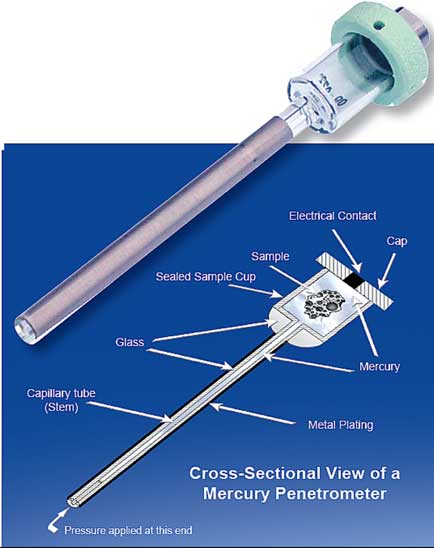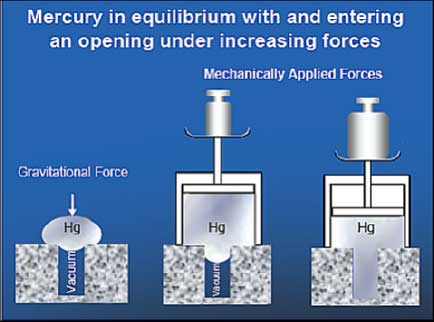MICP
MICP is a great technique for evaluating porosity of a wide range of solid materials. MICP has easy to understand principles for Pore Size and Volume. The quality of the results requires the proper identification of porosity, closure correction, and blank error. Additional calculations make MICP ideal for geologists when predicting the performance of well sites.
Mercury Injection Capillary Pressure
The term “porosimetry” is often used to include the measurements of pore size, volume, distribution, density, and other porosity-related characteristics of a material. Porosity is especially important in understanding the formation, structure, and potential use of many substances. The porosity of a material affects its physical properties and, subsequently, its behavior in its surrounding environment. The adsorption, permeability, strength, density, and other factors influenced by a substances porosity determine the manner and fashion in which it can be appropriately used.
Analysis Defined
Since mercury does not wet most substances and will not spontaneously penetrate pores by capillary action, it must be forced into the pores by the application of external pressure. The required equilibrated pressure is inversely proportional to the size of the pores, only slight pressure being required to intrude mercury into large macropores, whereas much greater pressures are required to force mercury into small pores. Mercury porosimetry analysis is the progressive intrusion of mercury into a porous structure under stringently controlled pressures. From the pressure versus intrusion data, the instrument generates volume and size distributions using the Washburn equation.. Clearly, the more accurate the pressure measurements, the more accurate the resulting pore size data.
The penetrometer consists of a sample cup bonded to a metal-clad, precision-bore, glass capillary stem. The sample is placed in the sample cup; during analysis, mercury fills the cup and capillary stem. As pressure on the filled penetrometer increases, mercury intrudes into the sample’s pores, beginning with those pores of largest diameter. The mercury moves from the capillary stem resulting in a capacitance change between the mercury column inside the stem and the metal cladding on the outer surface of the stem. The AutoPore detects very slight changes in capacitance (equivalent to a difference of less than 0.1 microliter of mercury) so extraordinary resolution is achieved.



